#helical structure
Photo
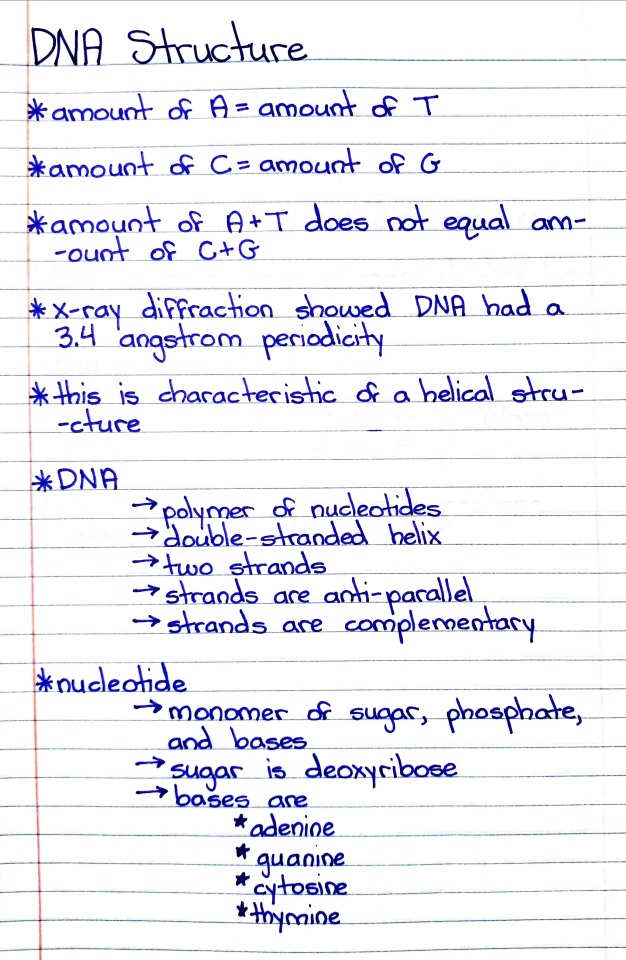
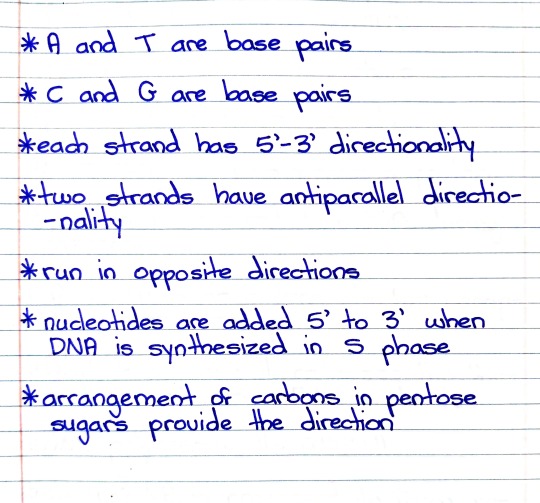
#studyblr#notes#genetics#genetics notes#dna#dna structure#structure of dna#nucleotides#dna strands#dna synthesis#pentose#x-rays#x-ray diffraction#helical structure#carbons#carbon#dna direction#dna strand direction
5 notes
·
View notes
Text
Heat, for example, breaks apart hydrogen bonds, so boiling a protein destroys its α-helical and β-pleated sheet structures.
"Chemistry" 2e - Blackman, A., Bottle, S., Schmid, S., Mocerino, M., Wille, U.
#book quote#chemistry#nonfiction#textbook#heat#hydrogen#chemical bonding#boiling#protein#alpha#helical#beta#pleated#sheet#chemical structures
0 notes
Text
my favorite thing in biology books is watching them scramble to convince us that Rosalind Franklin and Maurice Wilkins were NOT the ones to discover the structure of DNA and that Watson and Crick did all the work
#fuck watson and crick#saying watson and crick discovered the structure of DNA is like giving a child a coloring book and then telling them that they free-hand#drew everything in there#like sure they trial and error-ed the structure but it was Franklin and Wilkins who said “hmm maybe it’s helical in nature#ask me about it#PLEASE
0 notes
Text
youtube
#double helical structure of dna#double helical model of DNA#watson and crick model#watson-crick model of dna#dna structure#deoxyribonucleic acid#structure of dna#Youtube
0 notes
Text
youtube
#Molecular Basis of Inheritance#molecular basis of inheritance Class 12 Notes#Structure of Polynucleotide Chain Explanation#Structure of Nucleotide NEET#DNA Double Helix Structure#Structure of a Polynucleotide Chain#Double Helical Model of DNA#DNA Packaging and Structure#Molecular Basis of Inheritance NEET 2023#Youtube
0 notes
Note
i dont have a post but can you do this

heres the transcript
“Linda? What the fuck? Are you some fucking office secretary who just happens to be a middle aged white woman well into her 30s with a fucking demon of a child? Why in the ever loving shit did your parents name you Linda??? Like Linda is just Karen but somehow even more fucking stereotypical!”
peak writing
i'm not sure if this is a reference to anything or just thoughts on the name linda, but in my personal experience linda is just the boomer version of karen.
letter sequence in this ask matching protein-coding amino acids:
LindaWhatthefuckAreyousomefuckingofficesecretarywhousthappenstoeamiddleagedwhitewomanwellintoherswithafuckingdemonofachildWhyintheeverlovingshitdidyourparentsnameyouLindaLikeLindaisustKarenutsomehowevenmorefuckingstereotypical
protein guy analysis:
this was one of the rare structures that actually started to look worse as it was forming, and left me with a vile, unapproachable mess. i genuinely do not understand what rules the software had to break to even give me a pdb file, because there are side chains seemingly overlapping with each other and with the backbone. sure, no two atoms have their nuclei in the same space, but the bonds are so mangled that this could never stably exist. and this is even after the protein apparently severed some of the peptide bonds to make everything fit. apparently the rage against linda is strong enough to make electrons stop existing. this made me so mad i completely forgot that this travesty has some real alpha helices, if only to mock me. i am so upset that i had to look at this with my own eyes
predicted protein structure:

cartoon representation of the main chain

all side chains shown as sticks

close up of the center of the protein (so you can understand my pain)
#science#biochemistry#biology#chemistry#stem#proteins#protein structure#science side of tumblr#protein asks
177 notes
·
View notes
Text
Raffle: Braided Crabapple Stave (CLOSED)

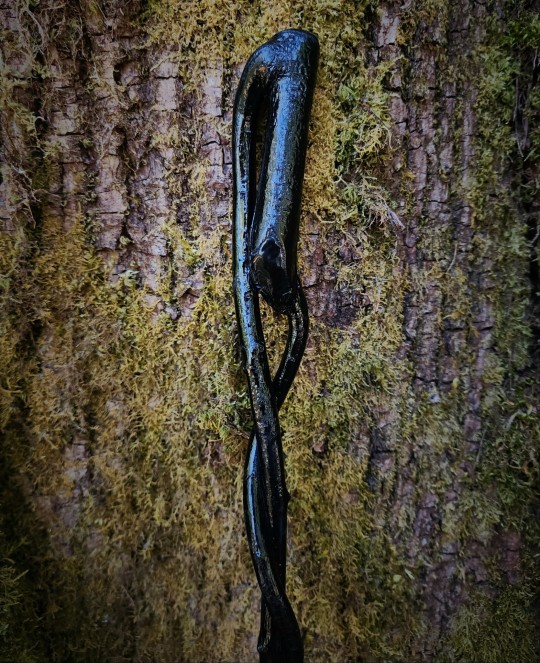
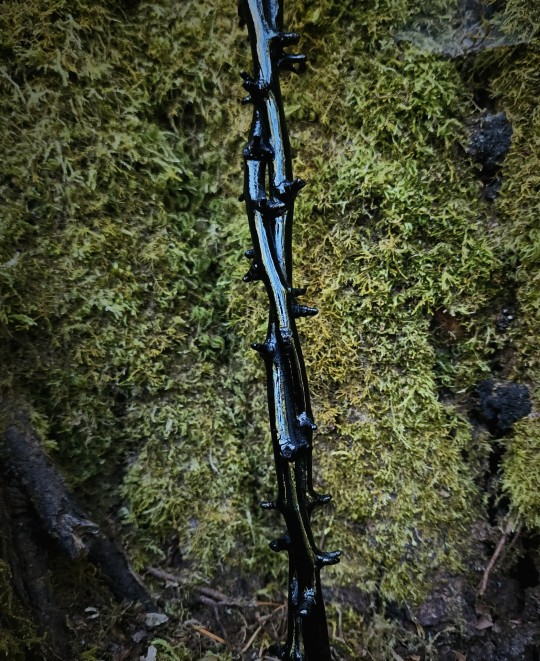
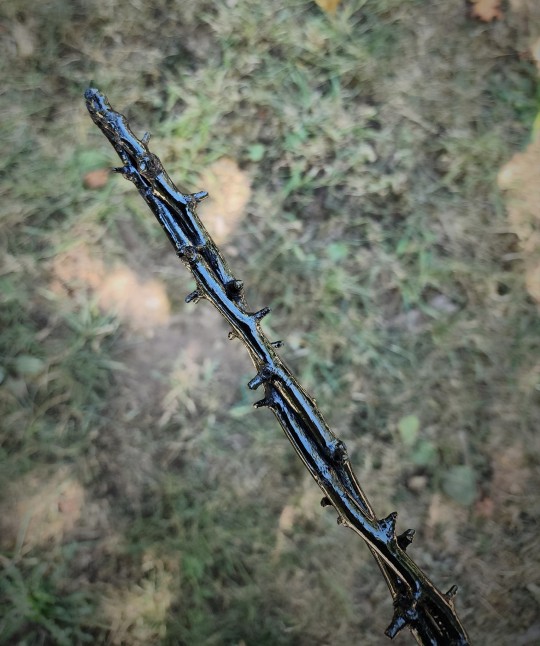
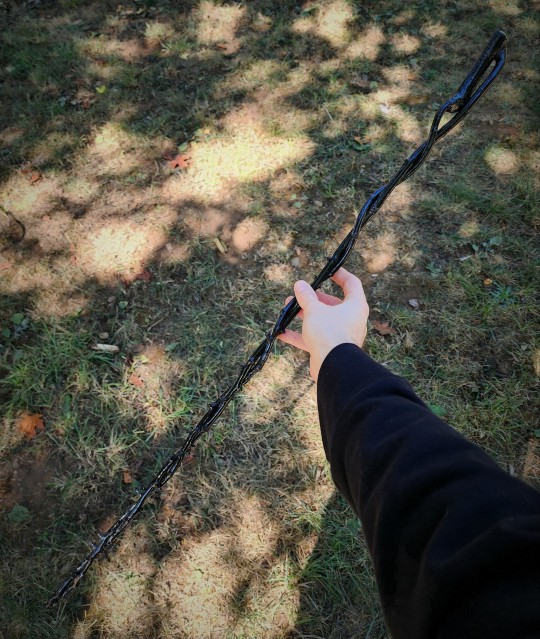
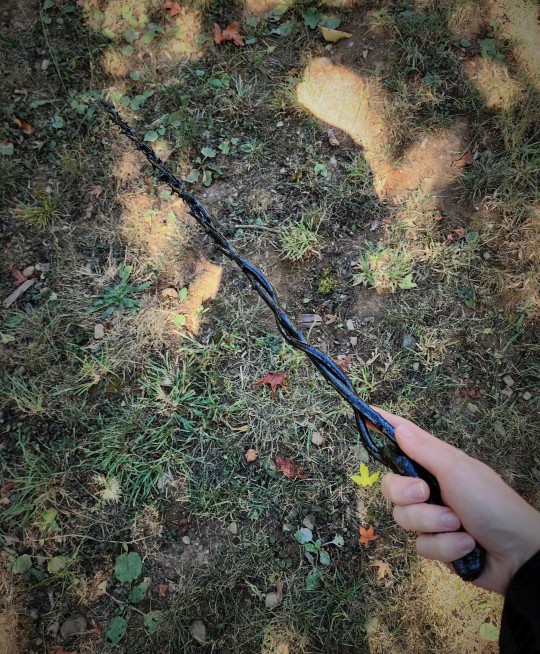

This raffle is for a unique Stave of braided, thorny wood that harvested from a 120+ year old Crabapple tree. It measures approximately 34 inches/86 centimeters in length and 1.5 inches/4 centimeters wide at its thickest point.
After initially acquiring the rare specimen in question, I went about curing the wood, smoothing the ends, and cleaning up some ragged branch stumps. While I usually debark pieces of this sort before working on them, the particular helical structure and profusion of thorns made me worried about being able to strip and sand the piece without damaging it. As such, I instead gave it a thin coat of handmade Dragon's Blood varnish to help stabilize and prime the wood, and then went about staining the entire piece using a polymerized oil pigment I make from Hearth Soot (Creosote) harvested from the interior of our Wood Stove. I applied layer after layer of the pigment until the bark was thoroughly coated and preserved, then used a cloth and my homemade Wisefool’s Oil (a ritually crafted oil of empowerment that also serves as a wonderful wood conditioner) to polish away the excess, before sealing the piece with my personally developed Wisefool's Glaze (a ritually empowered wood varnish made from an array of potent arboreal resins.) Finally, I gave the stave one last protective coating of polyurethane and suffumigated it with a smoke of Apple Blossoms and Dragon's Blood in a simple rite of hallowing.
While the retail price for this item is $200, I am taking the risk of setting up this raffle, in hopes that it might aid me in raising enough money to help us ease the cost of emergency surgery my dog required recently.
Tickets are $5 a piece, each assigned a number, and you can purchase up to three of them. To purchase a ticket, simply use the link below and follow the provided instructions. You will be asked to make an account and fill in your payment details, which will allow the raffle to email you your entry information, as well as automatically notifying the winner when the time comes. Participants are more than welcome to deactivate their accounts following the raffle. A random number generator will be used after ten days' time in order to determine which ticket number is the winner.
Thank you, truly and sincerely, to anyone and everyone who takes part! Please feel free to let me know if you come up against any issues! And as an aside—even if you don't end up entering the raffle, I'm sure that sharing it would still be helpful. :~)
Raffle Link: ☆
161 notes
·
View notes
Text


In 1952, these two men, James Watson and Francis Crick, claimed to have discovered the double helical structure of DNA. In 1962, they were awarded the Nobel Prize in Physiology/Medicine.
Unbeknownst to most at the time, they stole their work from female chemist, Rosalind Franklin. These two men are disgusting misogynists. Science teachers of Tumblr, I beg you to stop posting photos of the men who actively suppressed a woman who made one of the greatest scientific discoveries of all time.
#james watson#francis crock#rosalind franklin#nobel prize#dna#science#scienceblr#medicine#chemistry#chem#math#mathematics#1960s
605 notes
·
View notes
Note
Can you explain to me the chemistry behind the denaturation of enzymes and the process of allosteric and competitive inhibition?
First of all it's important to understand what an enzyme is. An enzyme is a protein, that catalyses reactions after binding to a substrate and then converts it or splits it.
An enzyme has a very specific shape so it can bind to the substrate, it's like a key and a lock. The substrate binds to the binding site, and in the catalytic or active centre the reaction takes place.
This is important to understand denaturation: Proteins are made out of amino acids that are bound with peptide bonds. Proteins have several levels of structure: Their primary level is the sequence of amino acids, the secondary structures are folded structures due to interactions of the peptide backbones via hydrogen bonds, like alpha helices or beta sheets.
The tertiary structure is folding of the peptides due to electrochemical interactions between different amino acids. Amino acids can have different charges due to their side chains, they can be positive, negative or neutral charged. So those charges will either attract or repel each other, putting the peptide chain in a certain three dimensional shape or conformation.
In the quaternary structure several peptide chains come together to create a bigger functional unit (the enzyme) made out of subunits, they often also interact with ions (cofactors) as their catalytic centre where the catalysed reaction takes place.
All those levels create the specific shape of the enzyme that is required to bind to their target substrate. So if those structures are changed in any way, it won't work anymore because it can't bind.
Just reading it probably makes it difficult to understand, so here's a textbook graphic.
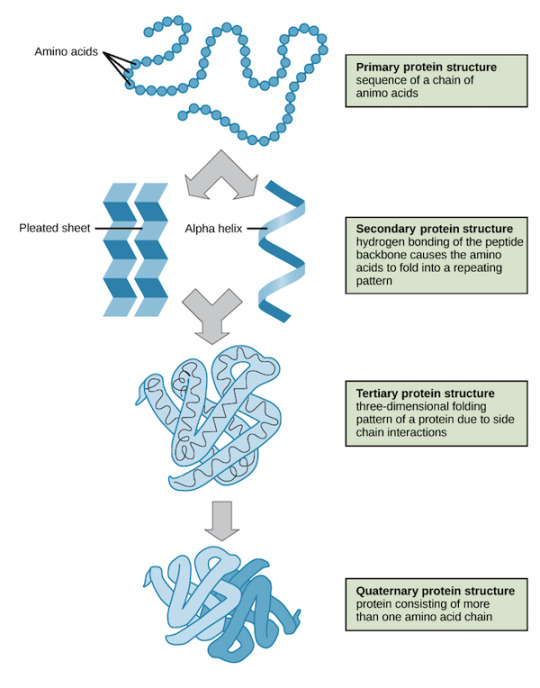
This shape can be changed by denaturation. A protein can be denaturated by heat, or changed pH or high salinity and other not optimal conditions. During those conditions like changed pH the interactions between the molecules and side chains do not work anymore because pH can change the charges of the sidechains, so secondary, tertiary and quarternary structures will be changed. When those structures are changed the binding site will change too and not resemble the lock anymore where the key substrate can bind, so now the enzyme is inactivated/inhibited.
Enzymes can also be inhibited (or activated) by regulatory molecules binding to the enzyme, inhibitors or activators.
This can be a competitive inhibition, when the inhibitor binds at the same binding and active site and blocking it, making the actual substrate that should be processed unable to bind there. Like a lock that already has a key stuck in it, you can't put another key in there.
Allosteric inhibition is when the inhibitor binds at another site, not directly at the active site where the substrate binds. But by binding to the allosteric site the conformation of the enzyme gets changed by chemical interactions, changing the binding site so the substrate doesn't get recognised anymore. A key can't be insterted into a lock that has been changed.
Inhibtion can be irreversible (making the enzyme dysfuntional for the rest of it's existence until it is degraded) or reversible.
#roleplay#rp#sherlock roleplay#sherlock rp#sherlock#sherlock holmes#biology#molecular biology#biochemistry#chemistry#a level chemistry#chemblr#bioblr#science#scientist#scienceblr#biology student#biology facts#a level biology#enzyme inhibitors#protein#molecular biology enzymes#science side of tumblr#studying#biology studyblr#chemistry major#biology major#college#university#sherlock replies
24 notes
·
View notes
Text
Q&A 005
@shnowyfox asked:
Where do you find so many of these artifacts relating to the park's history? And have you ever found artifacts that may have been from before Jim found the pit? (Like things from the native American tribes and whatnot?)

A few years ago, I forget now how many, I came into possession of a small storage building previously owned by a local community college. What I have posted has largely come from this scattered and disorganized collection of items and documents. As far as I have looked I have not found many artifacts from before the “discovery” of the pit by James Jackson.
@bub14dog-blog asked:
How does the Pit stay hydrated? And does the Pit seem to have a urinary system?
The Superorganism shares an adjacency to both the Edwards and Ogallala Aquifers, which Geobiologists speculate supply most of the water needs of the organism. However, it is worth noting that the Superorganism appears to have a high hydration retention rate with minimal water loss for its size. Much of the internal water volume is located in the chemical composition of the fluid found within the Gastric Seas, or within smaller but nonetheless massive water bladders which seem to provide reserves of fresh water for the biological process of the Superorganism.
Urine, or other identifiable forms of liquid waste, are probable but as-yet undocumented. The unique geobiology of the Mystery Flesh Pit suggests a complex metabolic cycle in which typical waste materials (namely minerals) are broken down and sequestered for use in other parts of the anatomy instead of totally expelled.
@love-abandon asked:
have you recovered any information regarding the state of the mystery flesh pit during the 90's?
Most of what we know about the pit comes from the 1990s, as that decade is widely considered the “golden age” of the park. From 1989 until around 2002, the park experienced yearly visitor throughput comparable to regional tourist destinations like SeaWorld or the Magic Kingdom. While the bulk of infrastructure development and construction took place in the early 1980s, the 1990s saw massive public and private investment in such infrastructure, including the Intrapark Resort and the renovations to both the Lower and Upper Visitor Centers. If there was a time to have gone to the Mystery Flesh Pit National Park to experience it at its best, it would have been the mid 1990s.
@joebob6448 asked:
Have there been any occurrences of ecological interactions between the creatures which live within the superorganism and ones outside of it besides amalgamations? For example, predation, parasitic, or even non-mutagenic symbiotic relations?
It is now well-known that many of the parasitic species within the Permian Basin Superorganism routinely surfaced and hunted small wild and domesticated animals, with some reports dating back to the mid-1800s. Even with the intervention of Texas state Fisheries and Wildlife personnel, as well as interventions from the National Park Service, it continues to be a minor problem in the areas surrounding surface orifices. Prior to the introduction of European cattle and other livestock to Texas, however, it is unknown to what extent this sort of scavenger hunting took place.
@goblinus-maximumbo asked:
How does Corpusite form? Also what's Oscuralite and why is Anodyne mining for it?

Photograph of an operating mining team clearing out fluid buildup.
Oscuralite is the mineralogical name given to “black bone”, so named due to its incredibly dark coloring. This coloring is the result of a dense concentration of microscopic, helically-oriented carbon strands. Oscuralite occurs within the center of certain mineral bone structures within the Superorganism and are theorized by Venteriologists to function as a rigid reinforcement or “primary skeleton” to complement the more conventional (if not enormous) skeletal system which serves as a more pliable, “secondary” skeleton. Oscuralite exhibits a range of incredible material properties, such as structural rigidity higher than steel, a strength-to-weight ratio fifty times higher than titanium, thermal insulation capabilities greater than that of aerospace-grade ceramic composites, all while having a mass of less than 730 grams per cubic meter of material.
Corpusite, or “Pearls”, as they are often referred to in the industry, are nacreous mineral formations which nearly always exhibit exceptionally-perfect spherical geometry. Due to the sub-molecular spherical tolerance that Corpusite spheres demonstrate, they have become invaluable as precision components in certain optical and measurement applications. Additionally, the near-complete uniformity of the crystalline structure which comprises the spheres has exhibited a secondary (though arguably more valuable) property of superconductivity at a temperature range of -38°C to over 1100°C. These spheres are commonly found in loose clusters within specialized tissue structures within the Superorganism, and are believed by venteriologists to be formed through a nacreous aggregation of discrete, though structurally-identical layers. The exact venterial function of Corpusite, as well as the organs which produce the material, is hypothesized to serve some role in the coordination of the nervous system of the Superorganism, but this is still poorly understood.
@ansalander asked:
Is there a wedding chapel?
And
@247slayc asked:
reactivated and rebranded this account just to ask has there ever been a wedding at the park before its defunction?
Yes, many marriages were officiated (and subsequently consummated) around and within the Mystery Flesh Pit National Park. For reasons understood neither to myself or the U.S. Dept. of the Interior, the park was a popular nuptial destination. Within the Lower Visitor Center itself was an interfaith chapel which could be rented for wedding ceremonies with a small deposit. Additionally, due to a pre-NPS contractual clause requiring an ordained ecclesiastical minister to be on-site within the LVC during operating hours, officiation of wedding ceremonies was also a limited service offered. The addition of several hospitality facilities in the late 1980s to the park only increased the annual instances of weddings and on-site receptions. The Hilton Intrapark Resort even openly advertised wedding packages.
@jurassicateer asked:
Mystery Flesh Pit National Park Tycoon video game?
Frontier Developments, Colossal Order (or anyone, really!), my DMs are open. If you guys want it to happen, you'll have to let the world know. The same goes for a TV show/Film/miniseries/Chili's promotional tie-in.
@bearb0i asked:
So I HAVE to ask— The Bronchial Forests, I noticed there were a few enclosed restrooms. I wonder, is there any information on where and what they did with human waste inside the park, especially in a system like lungs?
Restrooms within the park (both those found within larger structures like ranger stations as well as stand-alone restroom structures along trails) all feature active plumbing connections for wastewater removal as well as freshwater supply. Strict guidelines regarding policies for waste disposal within the venterial environment had been in place from the beginning of federal management of the park in the late 70s. A complex system of pumps and lifting stations collected wastewater before transporting it to a water treatment & reclamation facility adjacent to the support plant on the surface.
@bub14dog-blog asked:
Have any discoveries been made about the Dermal Layer?
As discovered during surface borehole drilling operations, the typical dermal thickness of the Superorganism is much greater than the entry orifice zones would otherwise seem to indicate. On average, the outer layer of the Superorganism consists of several dozen layers of dynamically-oriented cartilage plates, interlaced with dense networks of carbon-rich connective tissues which brings the overall average thickness to well over 300ft. Diamond-embedded carbide bits were required to successfully drill through this outer carapace, but the process was tedious and costly as it necessitated the sacrifice of multiple tooling bits and weeks of labor to bore a single 6” hole.
@rin-aldrin asked:
Has anything resembling ambulatory organs or limbs been discovered at the edges of the Superorganism? If not are there any theories of how it would move if/when it wakes up.
Yes. These “limbs” are responsible for bioseismic movements monitored by the United States Geological Survey. Because of this movement, more is generally known about the gross anatomical form of this part of the Superorganism than sections above or below these limbs, though geobiologists have known for decades that the organism consists of a large “mantle” which sits above the five primary limbs. Below is an artist's rendition of what the Permian Basin Superorganism might look like if it ever became fully active and ambulatory:

Artist’s depiction of a fully ambulatory Immanis colosseus.
@schwulerschmetterling asked:
I couldn't help but notice on the map, and now I'm quite curious. What is the "hall of horrors"? Judging by the fact that it's on an un-reinforced trail and isn't marked as park infrastructure suggests it's a natural formation. Also, it seems to be marked as an area to be quiet. What exactly is it?
It's no mistake that there isn't much information to be known about the “Hall of Horrors”. To even get there required a very strenuous hike by experienced, adventurous visitors. Perhaps in an attempt to preserve the mystique of the area, all who have seen it politely refrain from describing it in any meaningful way, insisting instead that it should be experienced in-person.
@darbussy asked:
Does the pit have teeth or does stuff fall down to get digested by the acids in the stomach?
While lifeforms have fallen into entry orifices shortly before being consumed, venteriologists believe this is more of a response to accidental incursion of foreign wildlife than a deliberate feeding mechanism. Instead, scientists have observed that the Superorganism requires a relatively small amount of organic tissue matter for its day-to-day metabolic processes. However, the volume of organic tissues “in reserve” required to sustain this leads many venteriologists to speculate that the Superorganism operates on extremely long feeding cycles many hundreds of millions of years in length. Fossil & bone evidence found within the gastric systems of the Pit supports a theory that the Superorganism was aquatic at a previous point in its life, and utilized an as-yet-unknown feeding mechanism to filter an entire ocean out of its large, tissue-rich organisms through this mechanism and into digestion and storage organs. This is also the working hypothesis for the prehistoric whale carcass found within the park.
@lagartija-69 asked:
What would happen if you filled a dump truck full of red bull or something and put it in the pit?
If the scale of the containment operations are any indication, I would imagine that you could dump a hundred dump trucks' worth of red bull into the Mystery Flesh Pit and might not receive any satisfactory response.
@mooncandy10101 asked:
Would you think the park could ever reopen?
Of course, I think it is inevitable unless it kills us all first.
@vv-i-o-l-e-tt asked:
Purely out of curiosity is there any particular reason that cave cooper the mascot so closely resembles that orange devil of home improvement, Homer the Home Depot mascot guy
If I had to speculate, I would guess that an untalented hack illustrator, beleaguered with the task of coming up with a silly looking mascot over a short period of time (say, for example, a lunch break), did the lazy thing and just traced an existing silly looking mascot. But no one knows for sure.
stinkw333d asked:
does the creature have a singular heart? or is it multiple smaller systems throughout the body like the nervous system/brain?
The vascular systems of the Superorganism are distributed in a way similar to the nervous system, though not as neatly organized. The Flesh Pit contains many separate but interdependent circulatory systems. This diagram may be helpful:

bandit--6 asked:
Was there ever any protest or push back from Animal rights groups or environmentalist after the discovery of the pit? I've read through the blog and haven't seen talk of any such event, I may have missed it. Part of me can just see them trying to keeping the equipment from entering.
There were in the late 1970s, though such efforts were and continued to be uncoordinated. It's worth noting that the exact nature of the Mystery Flesh Pit was not well known by the general public, and many did not view it as an “animal” at all. The fractured and sporadic nature of what protests did occur largely led to a decreasing awareness until post-2007, when the issue received substantially more attention.
anonymous asked:
Were there any plans to expand the park further or do any other crazy things like the resort in the gastric sea?

In the early 2000s there was an effort to open a “2nd gate” at one of the entry orifices that was much closer to the Midland/Odessa metropolitan area. Guests would have descended the entry orifice via an articulated elevator to a second Lower Visitor Center. A high-speed monorail would have connected this second resort to the main National Park complex, but the project never made it beyond the concept phase.
@arcticsirius asked:
If the moving of flesh is such an issue, would it be possible to make a base inside a bone-structure of the organism or have bones not been found as of yet?
One of the main principles in venterial engineering is the establishment of anchor points wherever possible. For this reason, many larger pieces of infrastructure (ranger stations, utility facilities, mining facilities) are built within/near skeletal or other rigid tissues. Additionally, it is essential that any venterial survey conducted of an area of the fleshscape have at least three reference points on/within a bony or rigid tissue body by which to gauge movement of the surrounding viscera.
@a-gucci-household asked:
Can we hear more about the “Marrow Folk”? What cause this rumor to pop up? Is there any substance to these claims?

@scarfanon asked:
Given that the Permean Basin Superorganism was discovered by accident during a mining excavation, is it possible that more than one of these creatures exist? Perhaps one was responsible for the Bloop recording, or may be lying dormant within the Yellowstone supervolcano.
This was an issue of concern in the years following the discovery, but no evidence of another Superorganism, or at least no evidence of one anywhere close to the size of the Permian Basin Superorganism, has been located domestically or abroad.
@eldritchdraaks asked:
What quarter of 2022 or even 2023 can the MFP book be potentially expected to be made available to the public?
And
@bigorangemooseman asked:
Progress on the book? And where one would be able to purchase?
Early-to-mid 2023 is a generous date that I aim to have something out by, but as I am attempting to publish the book traditionally, this of course will most likely change. I am still in the process of finishing the writing portion for the book, so I have not yet formally reached out to any literary agents or publishers, but will update my progress when I begin that process on my Patreon page.
#mystery flesh pit#mystery flesh pit national park#worldbuilding#text#lore#cosmic horror#body horror#unreality#horror art#horror worldbuilding
882 notes
·
View notes
Text

“Comparison between cymatic patterns generated by the human voice and sacred arts, calendars of ancient civilizations, the structure of a particle accelerator (LHC) and the geometry (orthogonal projection) of DNA helices.
Modern science allows us to see that all matter and energy in the universe is in a perpetual state of vibration. The entire universe, visible and invisible, physical and mental, is constituted by vibrations. Absolutely everything around us, and even in our own body, is constantly vibrating and emitting specific sounds.” - Robert Edward Grant
"If you want to find the Secrets of the Universe, think in terms of Energy, Frequency and Vibration.” ~Nikola Tesla
#SacredGeometry #UniversalGeometry
#LanguageOfLight #Mathematics
#UniversalMathematics #Math #Philosophy #Art #Geometry #Symmetry #Fractals #Cycles #Universe #Harmony # Vibration #Frequency #Energy #Hermeticism #Life #Manifestation #Alchemy #SpiritualScience #UnifiedScience
#Consciousness #Education #Knowledge
68 notes
·
View notes
Text
Chemistry Notes (Sept. 2023)
Full Notes:
Henderson-Hasselbalch Equation Ex. 4
Proposed Lewis Structure Ex. 5
Red Blood Cell Disorders
Solution Equations
Steroids
.
Note Cards:
Amphipathic Compounds
Characteristics of Helices
Dynamics of Enzyme-Catalyzed Reactions
Essential Amino Acids Mnemonic
Structure of Nucleosomes
.
Patreon
#studyblr#notes#masterlist#studyblr masterlist#studyblr resource masterlist#resource masterlist#resources#studying resources#studyblr resources#sources#chemistry#chem#biochem#biochemistry#organic chemistry#orgo chem#orgo#ochem#organic chemistry resources#chemistry resources#studying chemistry#studying mcat#mcat#mcat resources#chemistry resource masterlist#master list#studyblr master list#resources master list#biochem notes#biochemistry notes
47 notes
·
View notes
Text

Rosalind Franklin (1920-1958) was a British chemist and X-ray crystallographer whose work was crucial to the discovery of the double helix structure of DNA.
Here are some key facts about Rosalind Franklin:
She captured the famous "Photo 51" X-ray diffraction image of DNA in 1952, which revealed the double helix structure. However, her contribution was initially unrecognized.
She was an expert in X-ray crystallography and studied the molecular structures of DNA, viruses, coal and graphite.
Her work at King's College London, using X-ray diffraction techniques, provided important insights into the helical structure of DNA.
Her data and insights helped guide Francis Crick and James Watson in deducing the double helix model of DNA's 3D structure in 1953.
Franklin's contribution to the discovery was largely unacknowledged for many years due to the sexist attitudes of the time. Watson and Crick shared the 1962 Nobel Prize with Maurice Wilkins.
She made pioneering use of X-ray diffraction studies of viruses, laying the foundations for structural virology.
She died of ovarian cancer in 1958 at the age of 37, before she could be formally recognized for her seminal work on DNA structure.
Rosalind Franklin's meticulous X-ray work and skills in crystallography provided indispensable data that led to one of the greatest discoveries of the 20th century - the double helix structure of DNA.
#stickers#sticker art#sticker design#rosalind franklin#dna discovery#dna#biotechnology#science#sciart#scicomm
12 notes
·
View notes
Text
Exploring the Marvels of Biological Macromolecules: The Molecular Machinery of Life (Part 2)
Amino Acids: The Building Blocks
Proteins are composed of amino acids and organic molecules that contain an amino group (-NH2), a carboxyl group (-COOH), a hydrogen atom, and a distinctive side chain (R group). There are 20 different amino acids, each with a unique side chain that confers specific properties to the amino acid.
Primary Structure: Amino Acid Sequence
The primary structure of a protein refers to the linear sequence of amino acids in the polypeptide chain. The genetic information in DNA encodes the precise arrangement of amino acids.
Secondary Structure: Folding Patterns
Proteins don't remain linear; they fold into specific three-dimensional shapes. Secondary structures, such as α-helices and β-sheets, result from hydrogen bonding between nearby amino acids along the polypeptide chain.
Tertiary Structure: Spatial Arrangement
The tertiary structure is the overall three-dimensional shape of a protein, determined by interactions between amino acid side chains. These interactions include hydrogen bonds, disulfide bridges, ionic bonds, and hydrophobic interactions.
Quaternary Structure: Multiple Polypeptide Chains
Some proteins, known as quaternary structures, comprise multiple polypeptide chains. These subunits come together to form a functional protein complex. Hemoglobin, with its four subunits, is an example.
Protein Functions: Diverse and Essential
Proteins are involved in an astounding array of functions:
Enzymes: Proteins catalyze chemical reactions, increasing the speed at which reactions occur.
Structural Proteins: Proteins like collagen provide structural support to tissues and cells.
Transport Proteins: Hemoglobin transports oxygen in red blood cells, and membrane transport proteins move molecules across cell membranes.
Hormones: Hormonal proteins, such as insulin, regulate various physiological processes.
Immune Function: Antibodies are proteins that play a crucial role in the immune system's defense against pathogens.
Signaling: Proteins are critical in cell signaling pathways, transmitting information within cells.
Protein Denaturation and Folding
Proteins are exquisitely sensitive to environmental changes. Factors like pH, temperature, and chemical agents can disrupt protein structure, leading to denaturation. Proteins can sometimes refold into their functional shape if conditions return to normal.
Protein Diversity
The vast diversity of proteins arises from the combinatorial possibilities of amino acid sequences, secondary structure arrangements, and three-dimensional conformations.
Proteins, the versatile and intricate macromolecules, are the workhorses of biological systems. These molecules, comprised of chains of amino acids, are central to nearly every aspect of life, orchestrating various functions, from catalyzing chemical reactions to providing structural support. Let's delve into the remarkable world of proteins.

#science#biology#college#school#education#student#medicine#doctors#health#healthcare#biochemistry#molecular biology#proteins
31 notes
·
View notes
Text

Spontaneous curvature the key to shape-shifting nanomaterials, finds study
Inspired by nature, nanotechnology researchers have identified 'spontaneous curvature' as the key factor determining how ultra-thin, artificial materials can transform into useful tubes, twists and helices.
Greater understanding of this process—which mimics how some seed pods open in nature—could unlock an array of new chiral materials that are 1,000 times thinner than a human hair, with the potential to improve the design of optical, electronic and mechanical devices.
Chiral shapes are structures that cannot be superimposed on their mirror image, much like how your left hand is a mirror image of your right hand but cannot fit perfectly on top of it.
Read more.
8 notes
·
View notes
Note
what do you do whenever life gets you down, keeps you wearing a frown, and the gravy train has left you behind?
this was not a song i'd ever listened to before. thank you for sharing that with the class :/
letter sequence in this ask matching protein-coding amino acids:
whatdoyoudowheneverlifegetsyoudownkeepsyouwearingafrownandthegravytrainhasleftyouehind
protein guy analysis:
this one was surprisingly well put together! we got three alpha helices, which were predicted with up to 70% confidence towards the middle of each. i also included an image of the surface, where we can see that there are some weird pockets which would probably be filled with water, but its still more structured than some other shapes we have seen. i would be really interested to see how this would interact inside of a model unicellular organism and what sort of effect it would cause
predicted protein structure:

cartoon showing only the main chain

surface model of the above protein
#science#biochemistry#biology#chemistry#stem#proteins#protein structure#science side of tumblr#protein asks
69 notes
·
View notes